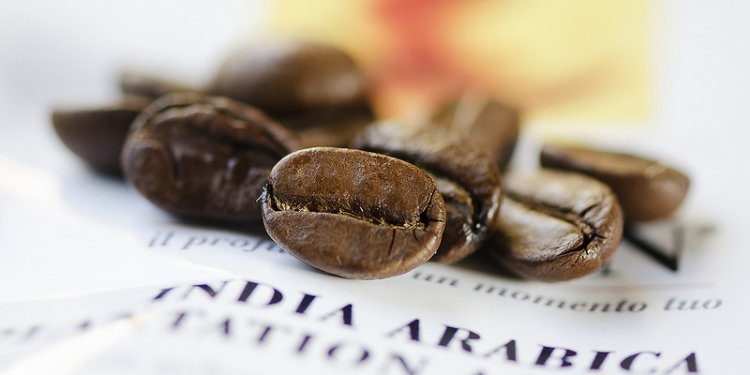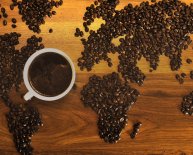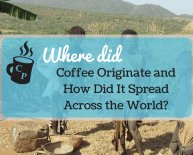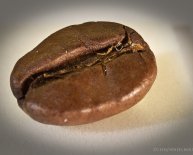
Coffee beans Origin
Espresso beans are not actually beans nevertheless seed of a cherry like fresh fruit this is certainly generated by a flowering shrub frequently called a coffee tree. There are two main main varietals of coffee trees, Arabica and Robusta, all of the specialty grade coffees sold these days are from trees from the Arabica household. Coffee trees develop into the equatorial zone all over the world in addition to most useful coffees are manufactured from nations that have rich volcanic soils and higher elevations. Raw unroasted coffees are typically green to yellowish in color and generally described as green coffees. The coffee-roasting process is exactly what brings out the rich brown colors that many individuals keep company with coffee. Green espresso beans are rack steady if held precisely will last 6 months to one 12 months. Roasted coffee conversely, has a tendency to start going stale after about 10 days. Coffee may be roasted a lot of different techniques, from easy frying pans to fancy commercial roasters that will roast continuously.
There are lots of factors which will influence just how coffee will taste when it has been roasted. One of the greatest signs of how coffee will taste is the region or nation in which its grown. Each creating region has actually special problems that shape the flavors regarding the coffee.
While these are easy details, generally speaking coffees from different making regions have actually these traits;
The Americas
American coffees are cultivated all across the mountainous anchor of Latin America, from south Mexico south through Central The united states, Colombia and Bolivia to Peru, along with the highlands associated with bigger countries of Caribbean and on the large plateaus of Brazil. At their best, the classic coffees of Latin-American manifest bright, lively acidity and a clear, simple cup. They give you what-for a North American is an ordinary good coffee knowledge.
Through this extremely broad category of coffees, however, there are numerous variations in glass and character. Ab muscles highest grown up coffees of Central The united states and Colombia are boldly and intensely acidy and full-bodied. These are the coffees that attract coffee purists for the old school. Caribbean coffees, like the celebrated Jamaica Blue Mountain, tend at their utmost to be big-bodied and roundly balanced with wealthy, low-key acidity. A Nicaraguan coffees tend to be meaty and full-bodied. Lower grown coffees from Central America are usually smooth and round in profile, since are the often exquisitely sweet coffees of Peru.
The type for the classic Latin-American glass derives, simply, from clarity of taste achieved through wet-processing. The coffees of Brazil offer a unique realm of experience considering a much wider assortment of handling techniques, from dry-processing, which creates the classic Brazil Santos glass, low-toned, spicily complex and rich, to semi-dry or pulped all-natural processing, which encourages a softly complex, delicately fruity glass, to classic wet-processing, which creates a cleanly understated, pleasingly low-acid glass just like the one offered by the finer reduced cultivated coffees of Central The united states.
Africa and Arabia
A number of the world’s many distinctive coffees are cultivated in East Africa along a long north-south axis that starts on south tip associated with the Arabian Peninsula in Yemen and concludes in Zimbabwe in south Africa, on the way encompassing the highlands of Ethiopia, Kenya, Tanzania, Zambia, and many less prominent origins.
These frequently remarkable coffees are described as a number of striking floral and fruit records, from nearly perfume-like flowery and citrus personality of Ethiopia wet-processed coffees through the intensely acidy and berry-toned Kenyans towards the smooth and voluptuously fruity Zambians. This category of coffees includes two of world’s oldest and a lot of standard origins: the Harrar coffees of north-eastern Ethiopia additionally the coffees of Yemen, simply across the Red Sea from Ethiopia. Both these coffees are chosen and put out to dry on rooftops, fruit and all, a lot because they were when coffee very first came onto the world stage in seventeenth century. Both display variants on a wild, complex, somewhat fermented fruitiness many coffee fans discover as seductive these days because the first coffee drinkers of Europe performed.
India additionally the Pacific
The best-known & most distinctive Pacific coffee origins are grown inside Malay Archipelago, that sequence of frequently enormous islands that define the nations of Indonesia, Timor and Papua New Guinea. These coffees range from the deep-toned typically processed coffees of Sumatra, Sulawesi and Timor, with their complex fruit, earth, and musty records. In comparison, wet-processed coffees of Sumatra, Java, and Papua New Guinea tend to be bright and flowery and can even range between delicate to (in the case of some Papua New Guineas) intensely and fragrantly acidy.
Arabica coffees from Asia tend to be nice, floral and low in acidity. India is also the source of the world’s best coffees for the Robusta species, the wet-processed Parchment and Kaapi Royale Robusta, as well as the unique Monsooned Malabar, a dry-processed coffee that's confronted with moisture-laden monsoon winds for several months, this unique procedure mutes acidity, deepens body, and adds a malty mustiness.
Hawaiian coffee is yet another matter nevertheless. The famous coffees of Kona resemble the best Central The united states coffees, with a classically clean, transparent cup that can range from powerfully acid and bright to smooth and delicate. The coffees regarding the island of Kauai tend to be round, balanced, and reduced in acidity owing to low developing altitudes. The area of Molokai produces two unique coffees, a wet-processed Malulani home remarkable because of its spicy pipe-tobacco tones, as well as the dry-processed Molokai Muleskinner, an extremely harsh, unpredictable coffee that often shows mild musty and fruit ferment records.
















